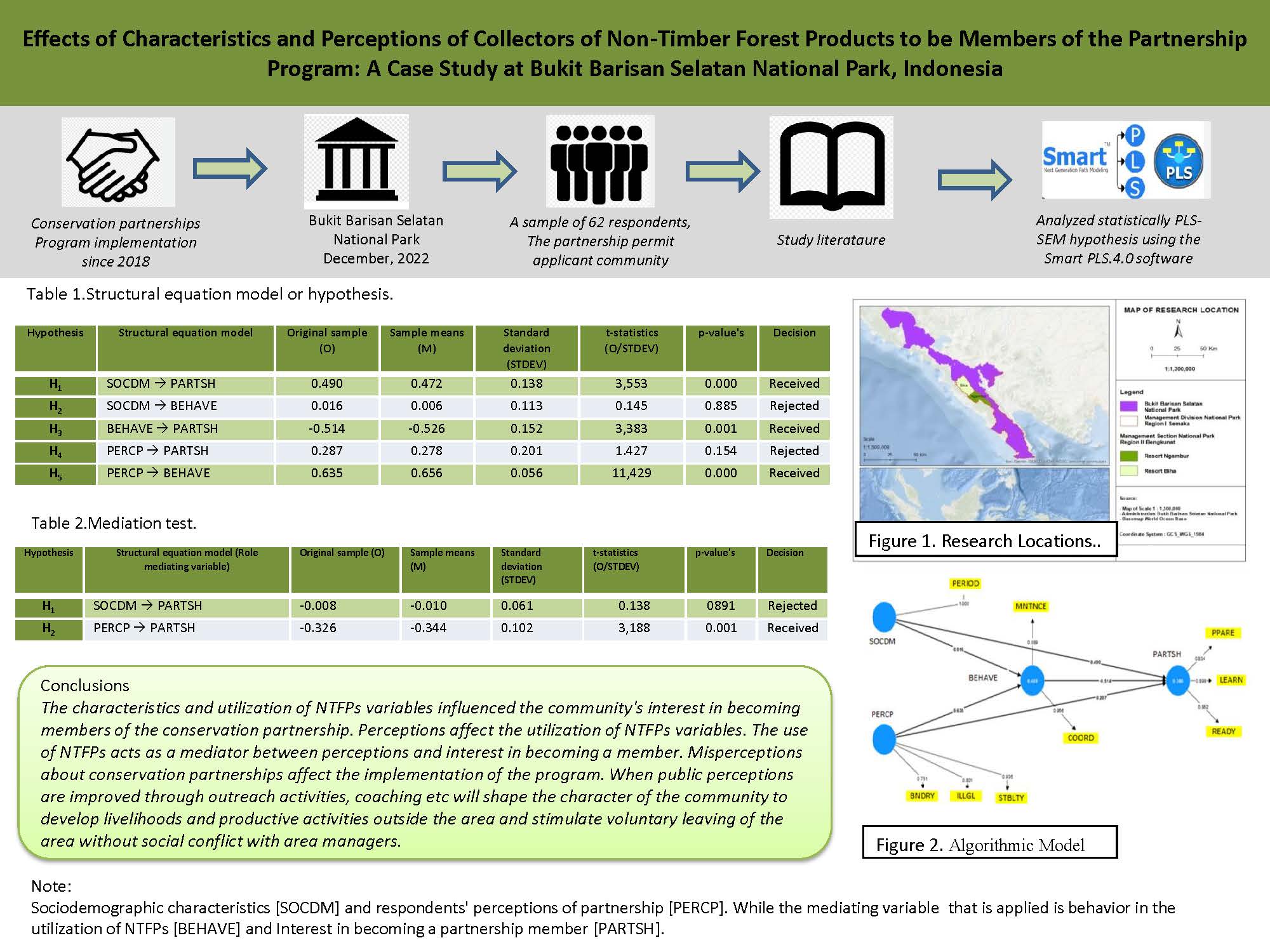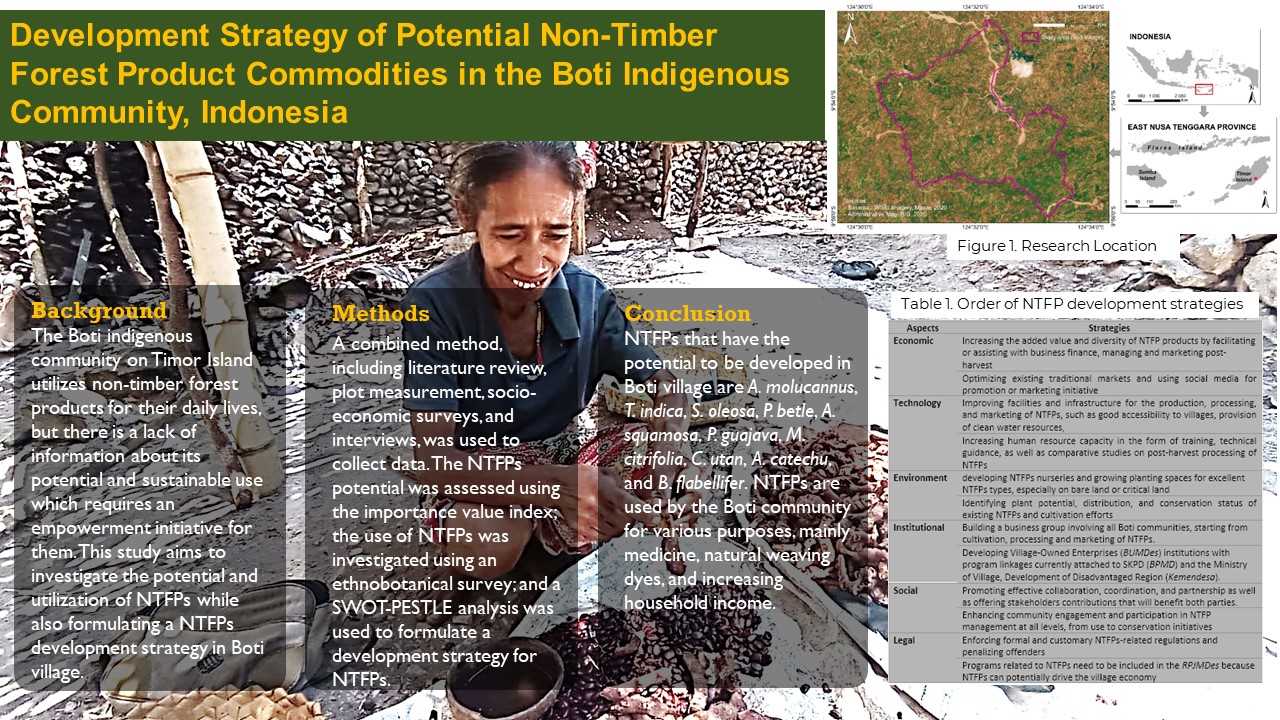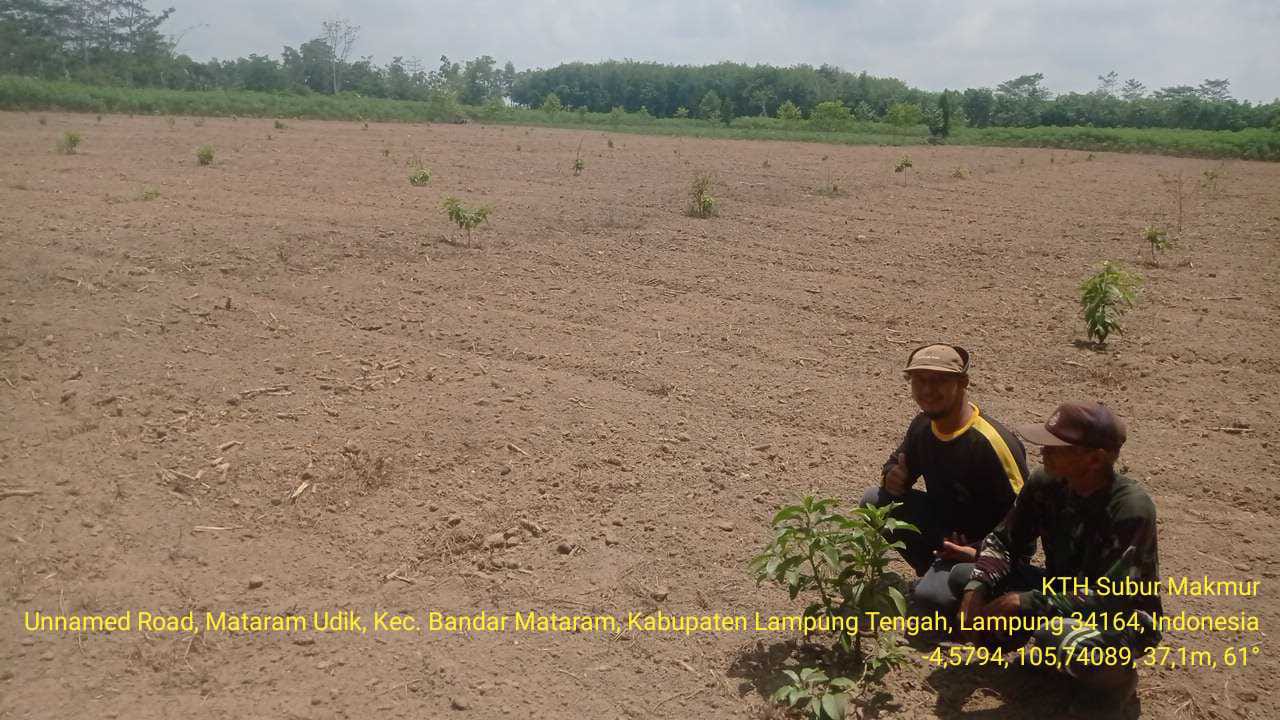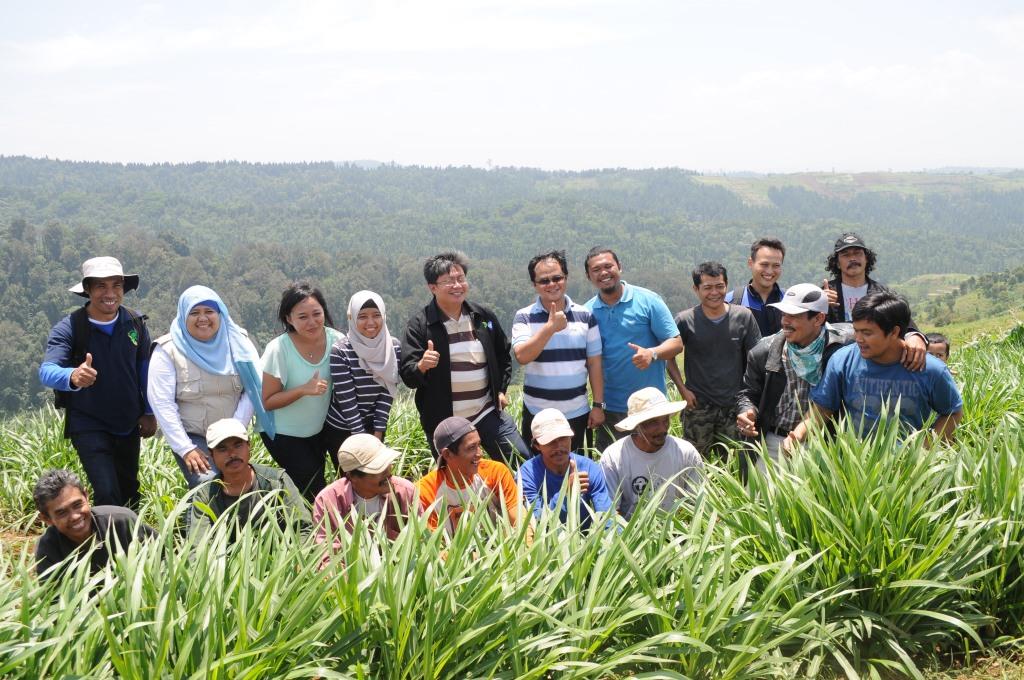Effects of Characteristics and Perceptions of Collectors of Non-Timber Forest Products to be Members of the Partnership Program: A Case Study at Bukit Barisan Selatan National Park, Indonesia
Abstract
Conservation partnerships are institutional innovations for self-empowering so that people are no longer dependent on forest areas. Initially, it regulated the relationship between the rights of non-timber forest product collectors (NTFPs) and their obligation to maintain sustainability, such as in the Bukit Barisan Selatan National Park (BBSNP). The high interest in becoming members has not been matched by the optimal implementation of the program that has been implemented since 2018 in the BBSNP traditional zone. Characteristics and perceptions are considered to have an influence on people's behavior in utilizing NTFPs and being interested in becoming members of the partnership. The aim of this research is to analyze the influence of community characteristics and perceptions on the utilization of NTFPs and their desire to become members of the partnership. Data collection used interviews and literature studies, analyzed statistically inferentially in December 2022 by testing the partial least square structural equation modeling (PLS-SEM) hypothesis using the Smart PLS.4.0 software for students with a sample of 62 respondents, namely the partnership permit applicant community. The results of the hypothesis test showed that the characteristics and utilization of NTFPs variables influenced the community's interest in becoming members of the conservation partnership. Perceptions affect the utilization of NTFPs variables. The use of NTFPs acts as a mediator between perceptions and interest in becoming a member. Misperceptions about conservation partnerships affect the implementation of the program. When public perceptions are improved through outreach activities, coaching etc will shape the character of the community to develop livelihoods and productive activities outside the area and stimulate voluntary leaving of the area without social conflict with area managers.
References
Abdul, Y. (2023, May 10). Studi pustaka: Pengertian, tujuan, sumber dan metode. Deepublishstore.com. https://deepublishstore.com/blog/studi-pustaka/
Agustina, M., Winarno, D. W, & Darmawan, A. (2018). Polarisasi persepsi para pihak dalam pengembangan hospitalitas ekowisata di unit pengelola wisata Kubuperahu Taman Nasional Bukit Barisan Selatan (TNBBS). Jurnal Hutan Tropis, 6(2), 154–160. https://doi.org/10.20527/jht.v6i2.5403
Alhakim, R. R., & Hidayah, H. A. (2022). Pendekatan structural equation modelling untuk penelitian pendidikan. Jurnal Ilmu Pendidikan, 17(1), 1–7.
Aspuan, A., & Nugraha, R. N. (2022). Persepsi masyarakat terhadap pengelolaan Taman Wisata Alam Telaga Warna Kabupaten Bogor Provinsi Jawa Barat. Jurnal Inovasi Penelitian, 3(6), 6593–6598
Bentler, P. M., & Bonett, D. G. (1980). Significance test and goodness of fit in the analysis of covariance structures. Psychological Bulletin, 88(3), 588–606. https://doi.org/10.1037/0033-2909.88.3.588
Budiman, I., Fujiwara, T., Sato, N., & Pamungkas, D. (2020). Another law in Indonesia: Customary land tenure system coexisting with the state order in Mutis Forest. Jurnal Manajemen Hutan Tropika, 26(3), 244–253. https://doi.org/10.7226/jtfm.26.3.244
Chin, W. W . (2022, November). Partial least squares for researcher: An overview and percentage of recent advances using the PLS approach. https://pdfs.semanticcholar.org/8e84/bce5ea24612e985742402779c438d11b6439.pdf
Dinh, T. S., & Pham, T. V. (2020). Solutions to ensure sustainable livelihoods for biodiversity conservation in Bu Gia Map National Park. Journal of Forestry Science and Technology, 1, 53–61.
Dinh, T. S. & Pham, T. V. (2023). Non timber forest products in Cat Tien: Local use and sustainable management. Jurnal Manajemen Hutan Tropika, 29(1), 79–87. https://doi.org/10.7226/jtfm.29.1.79
Dunggio, I. & Gunawan, W. (2009). Telaah sejarah kebijakan pengelolaan taman nasional di Indonesia. Jurnal Analisis Kebijakan Kehutanan, 6(1), 43–56.
Faizah, O. A., Suparti, & Hoyyi, A. (2021). Analisis technology acceptance model pada aplikasi platform shopee dengan pendekatan partial laeast square (Studi kasus pada mahasiswa Universitas Diponegoro). Jurnal Gaussian, 10(3), 423–434. https://doi.org/10.14710/j.gauss.v10i3.32802
Firnanda, E., Harianto, S. P., Winarno, G. D. , Wulandari, C., Dewi, B. S., & Fitriana, Y. R. (2020). Persepsi masyarakat daerah penyangga terhadap fungsi ekologi Taman Nasional Bukit Barisan Selatan. Jurnal Hutan Tropis, 9(3), 1–10.
Fornell, C. & Larcker, D. F. (1981). Evaluating structural equation models with unobservable variables and measurement errors. Journal of Marketing Research, 18(1), 39–50. https://doi.org/10.2307/3151312
Garaika & Darmanah. (2019). Metodologi penelitian. Lampung Selatan: CV. Hira Tech.
Gusmiarti, A. (2020). Penerapan metode structural equation modelling pada analisis tingkat kepuasan mahasiswa PMIPA UII tahun 2018 [thesis]. Yogyakarta: Universitas Islam Indonesia.
Hair, J. F., Matthew, L. M., Matthews, R. L., & Sarstedt, M. (2017). PLS-SEM or CBS-SEM: Update guidelines on which method to use. International Journal of Multivariate Data Analysis, 1(2), 107–123. https://doi.org/10.1504/IJMDA.2017.087624
Henseler, J., Ringle, C. M, & Sarstedt, M. (2014). A new criterion for assessing discriminant
validity in variance-based structural equation modeling. Journal of the Academy of Marketing Science, 43(1), 115–135. https://doi.org/10.1007/s11747-014-0403-8
Juniarto, T., Negara, P. P. S., & Wahyudi, B. (2021). Pengaruh kinerja pemasok terhadap kinerja rantai pasok menggunakan metode Structural equation modeling (SEM) pada PT Tiga Serangkai. Integrasi: Jurnal Ilmiah Teknik Industri, 6(1), 24–31. https://doi.org/10.32502/js.v6i1.3792
Marliana, R. R. (2020). Partial least squares-structural equation modeling pada hubungan antara tingkat kepuasasn mahasiswa dan kualitas google classroom berdasarkan metode WebQual 4.0. Jurnal Matematika, Statistika dan Komputasi, 16(2), 174–186. https://doi.org/10.20956/jmsk.v16i2.7851
Muhtarom, W., Syairozi, M. I., & Rismayati, R. D. (2022). Analisis citra merek, harga, kualitas produk dan promosi terhadap keputusan pembelian dimediasi minat beli. Derivatif: Jurnal Manajemen, 16(1), 36–47.
Ojwang, A. (2020). Community-company partnership in forestry in South Africa: An examination of trends. A report prepared as part of the South Africa Country study for the international collaborative research project steered by IIED: Instruments for sustainable private sector forestry. UK Department for International Development and the European Commission.
Okthalamo, V., Iskandar, D. A., & Masturiatna, A. (2022). Implementasi program kemitraan konservasi di Taman Nasional Bukit Barisan Selatan. Jurnal Penelitian Ekosistem Dipterokarpa, 8(2), 111–124. https://doi.org/10.20886/jped.2022.8.2.111-124
Pangestika, A. W. (2018). Persepsi petani padi terhadap pemanfaatan kartu tani di Desa Kesesi Kecamatan Kesesi Kabupaten Pekalongan [thesis]. Yogyakarta: Muhammadiyah Yogyakarta University.
Pratiwi, M. F., Indah, P. N., & Yuliati, N. (2022). Analisis pengaruh faktor-faktor keputusan konsumen menggunakan partial least square (PLS) (Studi kasus: Quoka Coffe, Surabaya). AGROINFO GALUH Jurnal Ilmiah Mahasiswa, 9(3), 1042–1054. https://doi.org/10.25157/jimag.v9i3.8106
Prayitno, D. E. (2020). Kemitraan konservasi sebagai upaya penyelesaian konflik tenurial dalam pengelolaan kawasan konservasi di Indonesia. Jurnal Hukum Lingkungan Indonesia, 6(2), 184–209. https://doi.org/10.38011/jhli.v6i2.175
Purwatiningsih, S. D. (2022). Pemahaman masyarakat sekitar hutan pada informasi konservasi hutan dalam memanfaatkan dan melestarikan hutan Taman Nasional Gunung Halimun Salak. Jurnal Sosial dan Humaniora, 6(1), 110–120.
Putra, Z. (2022). Meningkatkan kinerja organisasi pada sektor lembaga pendidikan tinggi: Analisis multi group dengan PLS-SEM. Jurnal Bisnis dan Kajian Strategi Manajemen, 6(1), 1–16. https://doi.org/10.35308/jbkan.v6i1.4385
Qodriyatun, S. N. (2019). Peran dan partisipasi masyarakat dalam pengelolaan kawasan konservasi secara kolaboratif. Kajian, 24(1), 41–54.
Rahayu, N. S., & Dewi, B. S. (2022). Pengembangan potensi wisata alam TNBBS (Studi kasus Resort Balik Bukit). JOPFE Journal, 2(1), 1–15.
Ristianasari, Muljono, P., & Gani, D. S. (2013). Dampak program pemberdayaan model desa konservasi terhadap kemandirian masyarakat: Kasus di Taman nasional Bukit Barisan Selatan Lampung. Jurnal Penelitian Sosial dan Ekonomi Kehutanan, 10(3), 173–185. https://doi.org/10.20886/jpsek.2013.10.3.173-185
Sadikin, A. (2021). Penegakan hukum terhadap tindak pidana kehutanan pasca berlakunya Perdirjen KSDAE tentang kemitraan konservasi. Jurnal Bina Hukum Lingkungan, 5(2), 215–236.
Sarstedt, M., & Cheah, J. H. (2019). Partial least square structural equation modeling using SmartPLS:A Software review. Journal of Marketing Analytics, 7(3), 196–202. https://doi.org/10.1057/s41270-019-00058-3
Sarstedt, M., Ringle, C. M., & Hair, J. F. (2021). Partial least square structural equation modeling. In C. Homburg, M. Klarmann, & A. E. Vomberg (Eds), Handbook of market research. Springer, Cham. https://doi.org/10.1007/978-3-319-05542-8_15-2
Sinthumule, N. I. (2021). An analysis of communities 'attitudes towards wetlands and implications for sustainability . Global Ecology and Conservation, 27, e01604. https://doi.org/10.1016/j.gecco.2021.e01604
Suhardjito, D., & Wulandari, C. (2019). A reflection of social forestry in 2019: Towards inclusive and collaborative government approaches. Journal of Forest and Society, 3(1), 137–140. https://doi.org/10.24259/fs.v3i1.6099
Suyono, R., Harahap, H., & Atthorick, A. T. (2017). Persepsi masyarakat Desa Lae Hole II dalam pengelolaan Taman Wisata Alam (TWA) Sicike-Cike. Jurnal Jeumpa, 4(1), 67–79.
Tegar, W. B., & Putra, S. (2022). Problems, common beliefs and procedures on the use of partial least squares structural equation modeling in business research. South Asian Journal of Social Studies and economics, 14(1), 1–20. https://doi.org/10.9734/sajsse/2022/v14i130367
Ticktin, T. (2004). The ecological implications of harvesting non-timber forest products. Journal of Applied Ecology, 41, 11–21. https://doi.org/10.1111/j.1365-2664.2004.00859.x
Wahyuni, A. S. (2022). Evaluasi keberhasilan penerapan e-learning UIN Suska Riau menggunakan model delon dan mclean dengan pendekatan structural equation modeling (SEM) [thesis]. Pekanbanru: Sultan Syarif Kasim Riau State Islamic University.
Winarno, G. D., Harianto, S. P., Safei, R. , Charles, Y., & Sutarno. (2019). Valuasi jasa lingkungan berbasis masyarakat di desa sekitar Taman Nasional Bukit Barisan Selatan Provinsi Lampung. Bandar Lampung: Pusaka Media
Wiratno. (2018). Sepuluh cara baru kelola kawasan konservasi di Indonesia: membangun organisasi pembelajar. Jakarta. Direktorat Jenderal KSDAE. Kementerian Lingkungan Hidup dan Kehutanan.
Wulandari, C., Bakri, S. Riniarti, M., & Supriadi. (2021a). Fostering the sustainability of community forestry program: Case study In Lampung-Sumatra. Forestry Ideas, 27(1), 210–232.
Wulandari, C., Budiono, P., & Iswandaru, D. (2021b). Importance of social characteristic of community to support restoration program in protection forest. Indonesian Journal of Forestry Research, 8(2), 173–186.
Authors

This work is licensed under a Creative Commons Attribution 4.0 International License.
Jurnal Manajemen Hutan Tropika is an open access journal which means that all contents is freely available without charge to the user or his/her institution. Users are allowed to read, download, copy, distribute, print, search, or link to the full texts of the articles in this journal without asking prior permission from the publisher or the author. This is in accordance with the Budapest Open Access Initiative (BOAI) definition of open access.








